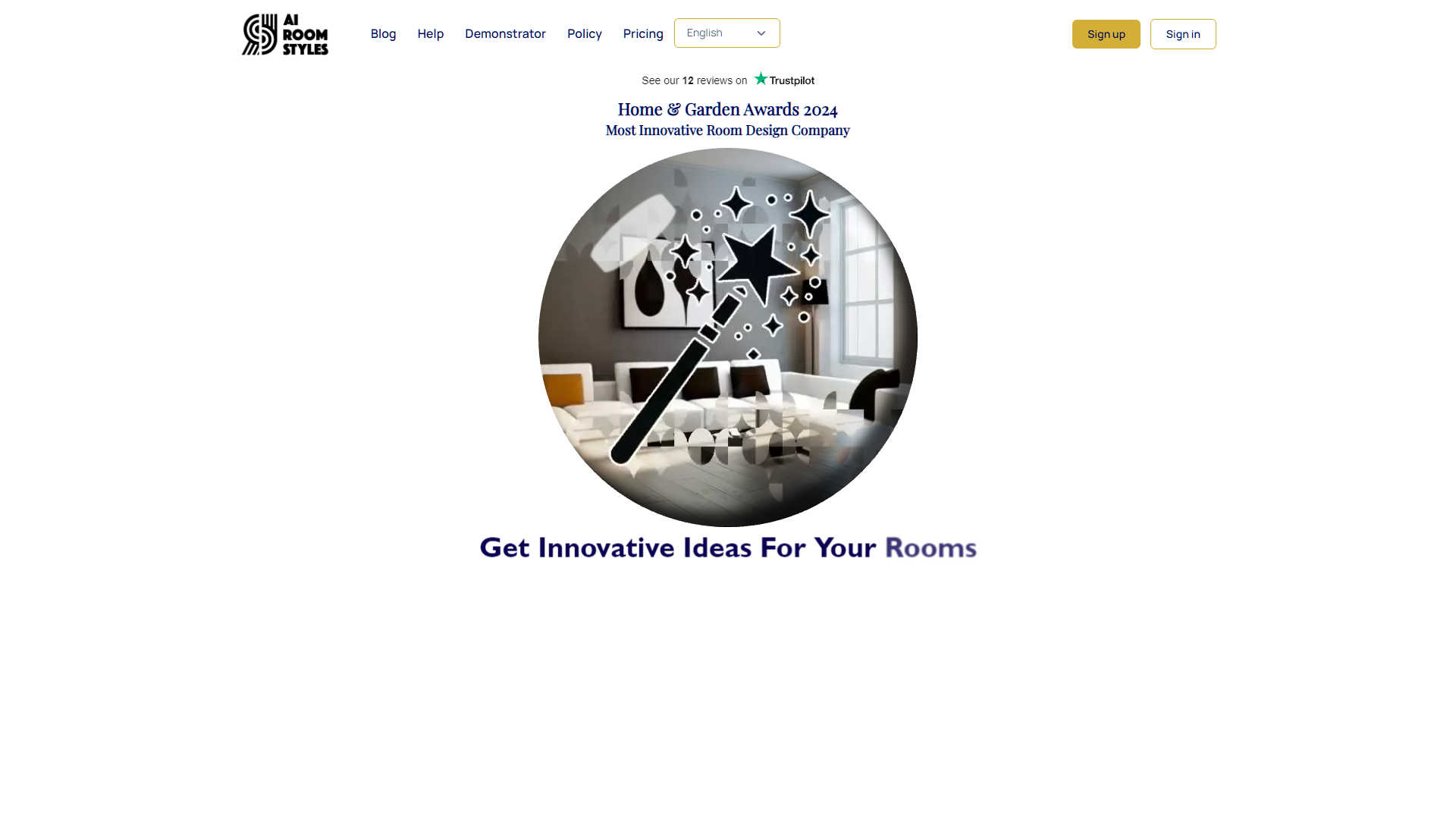Overview
AI Room Styles is a cutting-edge tool designed to revolutionize the way individuals, architects, and real estate agents envision and execute room designs. Leveraging advanced AI technology, this platform allows users to upload photos of their spaces and instantly receive realistic renderings of potential redesigns. The tool offers a wide array of customization options, including a selection of room types, an extensive palette of colors, and diverse style choices ranging from modern to classic. Additionally, users can edit layouts and directly shop for furniture items that fit their new design.
Praised for its creativity and realistic outcomes, AI Room Styles has garnered a global user base of over 50,000, who appreciate its user-friendly interface and the high level of security and privacy it maintains for personal data and images. This tool not only simplifies the design process but also inspires users with unique and appealing design ideas that can be easily implemented.
Ideal for anyone looking to refresh their living or workspace, AI Room Styles offers a seamless, enjoyable design experience that brings visionary room transformations to life with just a few clicks. Whether it's a complete makeover or a simple style update, AI Room Styles delivers professional and personalized results that meet the diverse needs of its users.
Key features
- Realistic AI renderings: Utilize advanced AI to transform user-uploaded photos into realistic and detailed room design visualizations, enhancing the planning and redesign process.
- Extensive style library: Choose from a wide range of interior design styles and themes to perfectly match personal tastes or explore new aesthetic possibilities.
- Customizable color schemes: Experiment with an array of color options to find the ideal palette that complements the space and aligns with user preferences.
- Interactive furniture shopping: Directly purchase furniture and decor from within the app, with options curated to fit the generated room designs and user specifications.
- Privacy and security assurance: Ensures all user data and uploaded images are securely handled, maintaining privacy and confidentiality throughout the design process.
- User-friendly interface: Designed for ease of use, allowing both novices and professionals to navigate and utilize the tool effectively for optimal design outcomes.
 Pros
Pros
- Cost estimation tools: Provides users with an immediate cost estimate for room projects, helping to budget effectively and make informed financial decisions.
- 3D room tours: Offers immersive 3D tours of designed spaces, allowing users to virtually walk through their rooms to better understand spatial dynamics and design flow.
- Collaborative project features: Enables multiple users to collaborate on a single project, making it easier for families or teams to share ideas and make collective decisions.
- Real-time design feedback: Incorporates a feature for users to receive real-time feedback and suggestions from design experts, enhancing the quality and functionality of room layouts.
- Multi-platform accessibility: Accessible on various devices and platforms, ensuring users can plan and visualize their room designs whether at home or on the go.
 Cons
Cons
- High data usage: Utilizing advanced AI for rendering realistic room designs requires significant data and processing power, which might be challenging for users with limited bandwidth or older devices.
- Limited physical interaction: While the tool offers realistic visualizations, users cannot experience the tactile qualities of materials, which can be crucial in interior design decisions.
- Overwhelming options: The extensive style library and customizable features might overwhelm users, making it difficult to decide or leading to decision fatigue.
- Dependence on technology: Reliance on digital visualization and online shopping removes the personal touch often associated with traditional interior design processes.
- Generic design solutions: AI-generated designs might lack the unique, personalized nuances that a human designer can offer, potentially leading to less distinctive interiors.

















